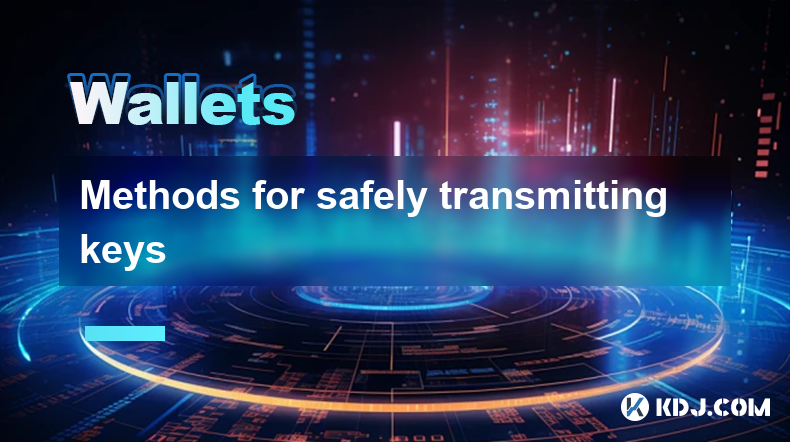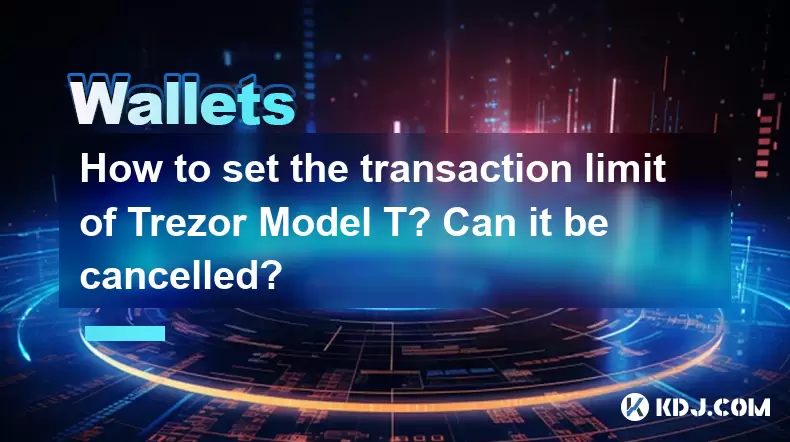-
 Bitcoin
Bitcoin $102,775.0532
3.21% -
 Ethereum
Ethereum $2,329.3928
20.41% -
 Tether USDt
Tether USDt $1.0001
-0.02% -
 XRP
XRP $2.3584
7.05% -
 BNB
BNB $631.0132
2.36% -
 Solana
Solana $164.9678
7.92% -
 USDC
USDC $0.9999
0.00% -
 Dogecoin
Dogecoin $0.2040
11.51% -
 Cardano
Cardano $0.7832
9.58% -
 TRON
TRON $0.2590
3.36% -
 Sui
Sui $3.9252
6.00% -
 Chainlink
Chainlink $15.9843
8.02% -
 Avalanche
Avalanche $23.1174
9.77% -
 Stellar
Stellar $0.2998
10.20% -
 Shiba Inu
Shiba Inu $0.0...01499
11.60% -
 Hedera
Hedera $0.1997
7.33% -
 Bitcoin Cash
Bitcoin Cash $420.9433
1.83% -
 Hyperliquid
Hyperliquid $24.5473
13.18% -
 Toncoin
Toncoin $3.2470
4.13% -
 UNUS SED LEO
UNUS SED LEO $8.7533
-0.42% -
 Litecoin
Litecoin $98.2086
6.84% -
 Polkadot
Polkadot $4.5824
7.84% -
 Monero
Monero $303.9445
4.18% -
 Pepe
Pepe $0.0...01329
44.61% -
 Dai
Dai $1.0001
-0.01% -
 Bitget Token
Bitget Token $4.5250
4.82% -
 Pi
Pi $0.7326
17.63% -
 Ethena USDe
Ethena USDe $1.0001
-0.03% -
 Uniswap
Uniswap $6.3357
21.74% -
 Bittensor
Bittensor $431.7557
6.77%
Methods for safely transmitting keys
Employing secure key transmission methods is crucial, utilizing techniques such as encryption, split key transmission, and multi-factor authentication to mitigate the risks of key compromise and safeguard sensitive data.
Feb 21, 2025 at 06:36 am

Methods for Safely Transmitting Keys
Key Points:
- The importance of secure key transmission
- Different methods for transmitting keys securely
- Best practices for key transmission
Methods for Secure Key Transmission
1. Encrypted Key Stores
- Using a password manager or hardware wallet to store encrypted keys
- Keys are encrypted at rest and in transit
- Requires strong passwords or physical security measures
2. Encrypted Key Transmission Channels
- Establishing a secure channel for key transmission
- Using protocols like TLS, SSL, or SSH to encrypt data in transit
- Verifying the authenticity of the recipient before transmitting keys
3. Split Key Transmission
- Dividing the key into multiple parts
- Distributing the parts to different locations or individuals
- Requiring multiple parts to reconstruct the key
4. Out-of-Band Key Transmission
- Transmitting keys through a channel that is separate from the network
- Using postal mail, physical delivery, or face-to-face meetings
- Ensuring physical security of the transmission
5. Key Derivation Protocols
- Generating keys from a shared secret
- Eliminating the need to transmit keys directly
- Ensuring that keys are unique and unpredictable
6. Identity-Based Key Management
- Using an identity provider to issue and manage keys
- Removes the need for key distribution and storage
- Requires a trusted and secure identity provider
7. Cloud-Based Key Management
- Utilizing cloud services to manage and transmit keys
- Leveraging third-party expertise and infrastructure
- Ensuring compliance with security standards
8. Hardware Security Modules (HSMs)
- Dedicated hardware devices for storing and managing keys
- Provides physical and logical security measures
- Ideal for high-security environments
9. Multi-Factor Authentication for Key Transmission
- Requiring multiple factors to authenticate key recipients
- Using one-time passwords, biometrics, or physical tokens
- Enhancing the security of key transmission
10. Best Practices for Key Transmission
- Use strong passwords and encryption protocols
- Implement multi-factor authentication
- Implement encryption throughout the transmission process
- Use a combination of methods for enhanced security
- Regularly review and update key transmission protocols
FAQs
Q: What are the risks of insecure key transmission?
A: Insecure key transmission can lead to key compromise, which can result in unauthorized access to sensitive data, financial theft, or other security breaches.
Q: What is the most secure method for transmitting keys?
A: The most secure method depends on the specific circumstances, but typically a combination of multiple methods is recommended, such as encrypted key stores, encrypted channels, and multi-factor authentication.
Q: How can I protect keys from transmission over a public network?
A: Use a secure channel protocol like TLS or SSH, or implement out-of-band key transmission using a separate channel.
Q: How often should I change my keys?
A: The frequency of key rotation depends on the risk level and security requirements; it is generally recommended to rotate keys regularly, such as every 30-90 days.
Q: What is the role of key servers in key transmission?
A: Key servers act as repositories for storing and transmitting public keys, providing a secure channel for distributing keys to authorized recipients.
Disclaimer:info@kdj.com
The information provided is not trading advice. kdj.com does not assume any responsibility for any investments made based on the information provided in this article. Cryptocurrencies are highly volatile and it is highly recommended that you invest with caution after thorough research!
If you believe that the content used on this website infringes your copyright, please contact us immediately (info@kdj.com) and we will delete it promptly.
- Rexas Finance (RXS) Is Silently Emerging from the Shadow of Ripple (XRP) to Become the New Titan
- 2025-05-09 18:05:13
- Solana (SOL) Doesn't Have the "Convincing Signs" to Overtake Ethereum (ETH) as the Blockchain of Choice for Institutions
- 2025-05-09 18:05:13
- Bitcoin Breaking $100,000 Officially Triggers the Next Leg of the Crypto Bull Market
- 2025-05-09 18:00:45
- The crypto market braces for significant movements as more than $3 billion in Bitcoin and Ethereum options expire today.
- 2025-05-09 18:00:45
- Multimodal AI Evolves to Create Systems That Can Understand, Generate and Respond Using Multiple Data Types
- 2025-05-09 17:55:13
- The "major" trade deal, in President Donald Trump's words
- 2025-05-09 17:55:13
Related knowledge

How to create a Dogecoin wallet? What are the steps to store Dogecoin safely?
May 09,2025 at 05:07pm
Creating a Dogecoin wallet and ensuring the safety of your Dogecoin are essential steps for anyone interested in participating in the cryptocurrency ecosystem. Dogecoin, originally created as a meme-inspired cryptocurrency, has gained significant traction and requires secure management to protect your investments. This article will guide you through the...

How to set the transaction limit of Trezor Model T? Can it be cancelled?
May 09,2025 at 10:35am
Setting the transaction limit on a Trezor Model T is an essential feature for users who want to enhance their security and manage their cryptocurrency transactions more effectively. This guide will walk you through the detailed steps to set a transaction limit on your Trezor Model T, as well as how to cancel it if needed. Understanding Transaction Limit...

How to generate a new address with Trezor Model T? Is there an upper limit?
May 09,2025 at 07:36am
Introduction to Trezor Model TThe Trezor Model T is a highly respected hardware wallet in the cryptocurrency community, known for its robust security features and user-friendly interface. It supports a wide range of cryptocurrencies and allows users to manage their digital assets securely. One of the essential functions of any hardware wallet is the abi...

How to enable Tor for Trezor Model T? Will the speed be slower?
May 09,2025 at 05:14pm
Enabling Tor on your Trezor Model T provides an additional layer of privacy and security by routing your transactions through the Tor network. This guide will walk you through the process of enabling Tor on your Trezor Model T and discuss the potential impact on transaction speed. Preparing Your Trezor Model T for TorBefore you begin, ensure that your T...

How to receive Ethereum with Trezor Model T? Where is the address?
May 09,2025 at 06:28am
Receiving Ethereum with a Trezor Model T involves a few straightforward steps that ensure your transactions are secure and your private keys are protected. The Trezor Model T is a popular hardware wallet that supports Ethereum and a variety of other cryptocurrencies. Let's explore how you can receive Ethereum on this device and locate your Ethereum addr...

How to set the PIN code of Trezor Model T? Can it be changed?
May 09,2025 at 07:29am
Setting up and managing the PIN code on your Trezor Model T is an essential aspect of securing your cryptocurrency. The PIN code acts as a primary layer of security, ensuring that only you can access your funds. In this article, we will guide you through the process of setting up your initial PIN code and changing it if necessary. We will also discuss t...

How to create a Dogecoin wallet? What are the steps to store Dogecoin safely?
May 09,2025 at 05:07pm
Creating a Dogecoin wallet and ensuring the safety of your Dogecoin are essential steps for anyone interested in participating in the cryptocurrency ecosystem. Dogecoin, originally created as a meme-inspired cryptocurrency, has gained significant traction and requires secure management to protect your investments. This article will guide you through the...

How to set the transaction limit of Trezor Model T? Can it be cancelled?
May 09,2025 at 10:35am
Setting the transaction limit on a Trezor Model T is an essential feature for users who want to enhance their security and manage their cryptocurrency transactions more effectively. This guide will walk you through the detailed steps to set a transaction limit on your Trezor Model T, as well as how to cancel it if needed. Understanding Transaction Limit...

How to generate a new address with Trezor Model T? Is there an upper limit?
May 09,2025 at 07:36am
Introduction to Trezor Model TThe Trezor Model T is a highly respected hardware wallet in the cryptocurrency community, known for its robust security features and user-friendly interface. It supports a wide range of cryptocurrencies and allows users to manage their digital assets securely. One of the essential functions of any hardware wallet is the abi...

How to enable Tor for Trezor Model T? Will the speed be slower?
May 09,2025 at 05:14pm
Enabling Tor on your Trezor Model T provides an additional layer of privacy and security by routing your transactions through the Tor network. This guide will walk you through the process of enabling Tor on your Trezor Model T and discuss the potential impact on transaction speed. Preparing Your Trezor Model T for TorBefore you begin, ensure that your T...

How to receive Ethereum with Trezor Model T? Where is the address?
May 09,2025 at 06:28am
Receiving Ethereum with a Trezor Model T involves a few straightforward steps that ensure your transactions are secure and your private keys are protected. The Trezor Model T is a popular hardware wallet that supports Ethereum and a variety of other cryptocurrencies. Let's explore how you can receive Ethereum on this device and locate your Ethereum addr...

How to set the PIN code of Trezor Model T? Can it be changed?
May 09,2025 at 07:29am
Setting up and managing the PIN code on your Trezor Model T is an essential aspect of securing your cryptocurrency. The PIN code acts as a primary layer of security, ensuring that only you can access your funds. In this article, we will guide you through the process of setting up your initial PIN code and changing it if necessary. We will also discuss t...
See all articles






















































































